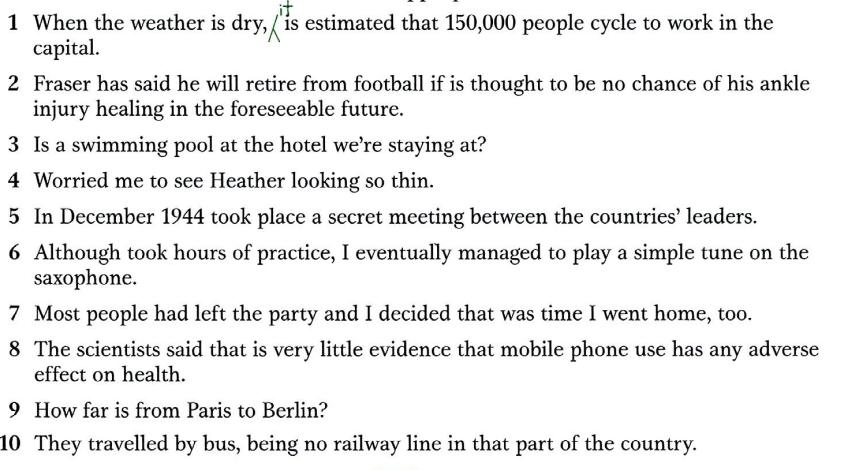
- •Exercises
- •Define the type of the clause in the following cases:
- •Identify predicative and non-predicative units, sentence, sentencoid, clause and sentence representatives in the following cases:
- •Identify the types of clauses in the following text:
- •Select the right form of the verbs. Identify types of predication (monopredicative, polypredicative, non-predicative) and types of clauses in all the syntactic units in the following text.
- •Identify types of clauses in the following text.
- •Read the text and identify all members of the sentence, name the types of subjects and predicates:
- •Comment on the secondary members of the sentences in the text.
- •Fill in it or there where necessary and comment on the subjects of the sentences.
Comment on the secondary members of the sentences in the text.

The secondary members of the sentences in the text provided in the image play a crucial role in enriching the information and adding depth to the primary message. Here’s a brief commentary on their function:
Adverbial Phrases: These often begin with prepositions and provide context in terms of time, place, manner, or cause. For example, “during a cold snap in December” gives us a specific time frame, enhancing our understanding of when more juice can be yielded from the grapes.
Relative Clauses: These provide additional information about a noun without starting a new sentence. For instance, “caused by wind and winter sunshine” is a relative clause that explains the factors leading to the dehydration of grapes.
Participial Phrases: These use present or past participles to add description or action to the sentence. The phrase “once extracted from the marble-hard berries” uses a past participle to describe the state of the juice when it is settled.
Infinitive Phrases: These can function as nouns, adjectives, or adverbs, often expressing a purpose. “To activate fermentation” is an infinitive phrase that tells us the purpose of adding a special yeast.
Appositive Phrases: These rename or clarify a noun or noun phrase. In the text, “the oily juice” is an appositive that gives us more information about the type of juice discussed.
Fill in it or there where necessary and comment on the subjects of the sentences.

When the weather is dry, it is estimated that 150,000 people cycle to work in the capital.
Subject: The weather
Comment: “It” is used as a preparatory subject referring to the situation of the weather being dry.
Fraser has said he will retire from football if there is thought to be no chance of his ankle injury healing in the foreseeable future.
Subject: Fraser
Comment: “There” is used as an existential subject indicating the existence of a chance for healing.
Is there a swimming pool at the hotel we’re staying at?
Subject: A swimming pool
Comment: “There” is used as an existential subject to inquire about the existence of a swimming pool.
It worried me to see Heather looking so thin.
Subject: The situation of seeing Heather
Comment: “It” is used as a preparatory subject referring to the situation that caused worry.
In December 1944 there took place a secret meeting between the countries’ leaders.
Subject: A secret meeting
Comment: “There” is used as an introductory subject to indicate the occurrence of an event.
Although it took hours of practice, I eventually managed to play a simple tune on the saxophone.
Subject: The act of practicing
Comment: “It” is used as a preparatory subject referring to the time spent practicing.
Most people had left the party and I decided that it was time I went home too.
Subject: The decision to go home
Comment: “It” is used as a preparatory subject referring to the decision-making moment.
The scientists said that there is very little evidence that mobile phone use has any adverse effect on health.
Subject: Evidence
Comment: “There” is used as an existential subject to indicate the presence or absence of evidence.
How far is it from Paris to Berlin?
Subject: The distance
Comment: “It” is used as a preparatory subject referring to the distance between two places.
They travelled by bus, as there was no railway line in that part of the country.
Subject: The mode of travel
Comment: “There was” is used as an existential subject to explain the reason for traveling by bus.
